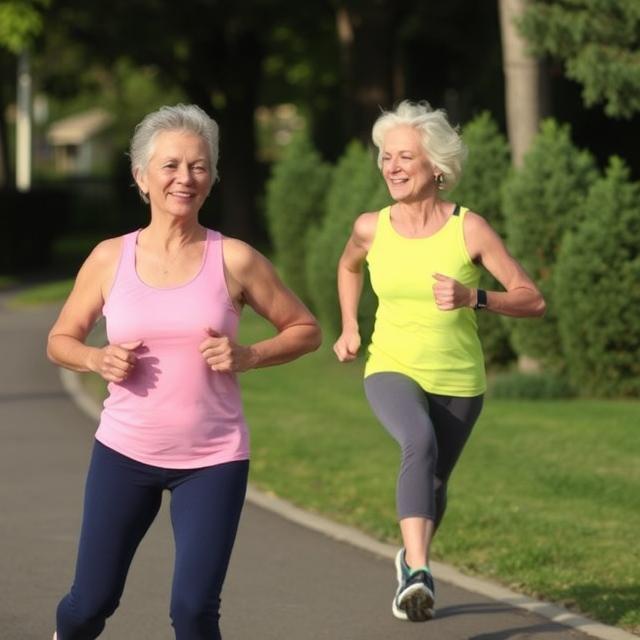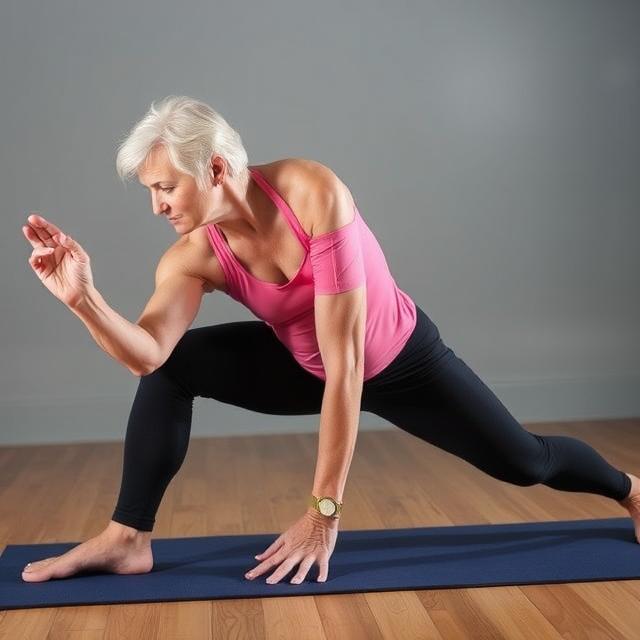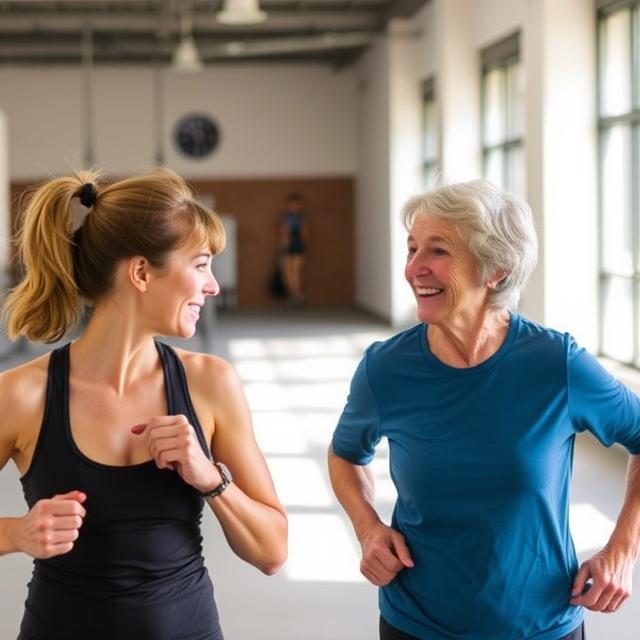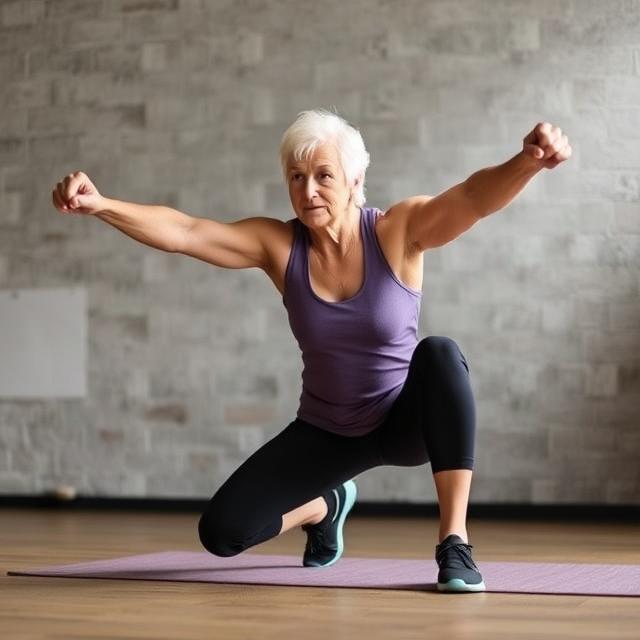Staying strong and maintaining fitness after 60 isn’t just about looking good—it’s about preserving independence, preventing injury, and living with vitality. As the body ages, muscle mass and bone density naturally decline, metabolism slows, and recovery times increase. However, the right strategies can counter these changes. A well-rounded approach focusing on strength, mobility, balance, and overall wellness can make a world of difference. The key is consistency, adaptation, and smart choices that respect your changing physiology without compromising ambition. Here are six powerful and practical methods to stay fit and strong well into your golden years.
1. Embrace Resistance Training with Purpose
Resistance training is non-negotiable after 60. As we age, we lose muscle mass at a rate of approximately 3–8% per decade after 30, and this accelerates after 60. Lifting weights or using resistance bands can counteract this decline. Focus on compound movements like squats, push-ups (modified if needed), rows, and deadlifts that work multiple muscles. Aim for two to three sessions per week, allowing at least 48 hours between sessions for each muscle group to recover. Form matters more than weight—prioritize controlled movements and proper alignment. If you’re new to resistance training, work with a trainer who understands older adults’ needs. Machines can provide a safer alternative to free weights for beginners, offering more stability and reducing the risk of injury. Use progressive overload—gradually increase resistance over time to continue building strength. Don’t forget your core; a strong core improves balance, posture, and overall function. Staying consistent and tuning into your body’s feedback are essential. Resistance training isn’t about lifting heavy—it’s about staying capable, mobile, and independent for years to come.

2. Prioritize Joint-Friendly Cardio Activities
Cardiovascular health remains critical, especially after 60, but pounding the pavement with high-impact workouts isn’t always sustainable. Opt for low-impact cardio like brisk walking, cycling, swimming, or elliptical workouts. These options are gentler on the joints while still providing excellent heart health benefits. Aim for at least 150 minutes of moderate-intensity aerobic activity per week, as recommended by health authorities. Water-based exercises like aqua aerobics not only offer resistance for muscles but also reduce joint stress, making them perfect for those with arthritis or mobility issues. Walking, one of the simplest and most accessible forms of exercise, enhances endurance, aids weight control, and supports mood through the release of endorphins. Nordic walking—with poles—can add an upper body element and improve posture. Try to integrate cardio into your daily routine: walk to the store, dance in the living room, or garden actively. Include interval training once or twice weekly to improve cardiovascular capacity and metabolic health. The focus should always be on sustainability and enjoyment. Keeping the heart pumping regularly not only preserves physical health but also supports cognitive function and emotional well-being well into your later years.

3. Improve Flexibility and Mobility Every Day
Flexibility and mobility are often overlooked components of fitness, yet they become increasingly important with age. Maintaining full range of motion in joints supports balance, posture, and strength training effectiveness. Incorporating a daily stretching routine—just 10–15 minutes—can make everyday movements like bending, reaching, and walking easier and safer. Focus on dynamic stretches before workouts and static stretches afterward to maintain length in muscles and fascia. Areas to prioritize include the hips, shoulders, lower back, hamstrings, and calves. Yoga is a particularly beneficial activity for older adults, as it combines flexibility, balance, strength, and mindfulness in one practice. Tai chi also offers gentle, flowing movements that enhance body awareness and joint health. Foam rolling and self-myofascial release techniques can reduce muscle tightness and improve tissue quality. Flexibility training doesn’t require expensive equipment—just consistency and intention. Improved mobility also reduces the risk of falls, the leading cause of injury among seniors. Stretching before bed can also help with sleep quality, which in turn supports recovery and energy. By making mobility and flexibility a daily priority, you’ll move more freely, with less discomfort, and greater confidence in every activity.

4. Focus on Functional Fitness Movements
Functional fitness is about training your body for real-life movements and activities. After 60, this becomes especially crucial as it directly supports independence and daily quality of life. Instead of isolating muscles, functional fitness integrates multiple muscle groups to improve coordination, balance, and strength simultaneously. Movements like sit-to-stand exercises, step-ups, carrying weighted bags (farmer’s carry), or reaching overhead with resistance bands mirror the motions we perform every day. This type of training improves your ability to climb stairs, get out of a chair, lift groceries, and maintain your balance on uneven surfaces. Functional workouts can be done with minimal equipment—resistance bands, kettlebells, or even bodyweight suffice. Adding balance components, such as single-leg stands or tandem walking, enhances neuromuscular coordination. Training barefoot (where safe) can improve foot strength and proprioception. Functional movements also engage the core naturally, improving posture and reducing back pain. Integrate these exercises into circuits for a light cardio benefit, or practice them slowly for control and precision. The goal is to maintain the kind of strength and agility that supports you in everything from tying your shoes to playing with grandkids. It’s about building a body that works—not just looks good.

5. Cultivate Recovery as a Core Strategy
Recovery isn’t rest—it’s an active component of fitness that becomes increasingly important with age. After 60, the body’s ability to repair and regenerate slows, making proper recovery practices essential to progress and preventing setbacks. This means allowing adequate rest between strength training sessions, getting 7–9 hours of quality sleep per night, and managing stress effectively. Sleep is when your body repairs muscle tissue, balances hormones, and resets your nervous system. Poor sleep undermines strength gains and increases injury risk. Consider winding down with gentle stretches, reading, or meditation before bed. Active recovery, such as walking, stretching, or gentle yoga, keeps blood flowing without adding stress to the system. Nutrition also plays a role—adequate protein intake supports muscle repair, while hydration facilitates joint and cellular health. Pay attention to signs of overtraining: persistent fatigue, soreness, irritability, or sleep disturbances. Incorporating mindfulness techniques, like deep breathing or tai chi, can also reduce cortisol and support a parasympathetic state that favors recovery. Remember, the older you are, the more intentional your recovery must be. Treat recovery not as a luxury but as a strategic pillar of your fitness plan—it keeps you consistent, safe, and strong.

6. Stay Social and Accountable Through Community
Staying strong after 60 isn’t just physical—it’s also social. Engaging with others through fitness can dramatically improve adherence, mood, and even physical results. Research shows that people who exercise in groups or with a partner are more consistent, enjoy workouts more, and stick with programs longer. Whether it’s a walking club, group fitness class, senior strength program, or dance class, the accountability and encouragement that come from shared goals can be powerful. Community also combats loneliness, which is linked to poorer health outcomes in older adults. Joining a local fitness center, senior wellness group, or virtual fitness community can foster a sense of belonging and motivation. Friendly competition—like step challenges or goal tracking—can add a playful edge. Surrounding yourself with like-minded peers helps normalize the commitment to fitness as a lifelong journey, not a phase. Don’t underestimate the mental health benefits: shared laughter, encouragement, and a sense of purpose go a long way in reducing anxiety and depression. Whether you meet in person or connect virtually, making fitness a social endeavor transforms it from a task into a joyful, sustainable lifestyle habit. Community turns discipline into delight and workouts into wellness rituals.

Aging well isn’t about resisting time—it’s about optimizing it. After 60, smart, intentional fitness practices become vital not just for strength, but for freedom, resilience, and joy. Incorporating resistance training, low-impact cardio, mobility work, functional movements, recovery strategies, and social support creates a balanced, powerful approach to aging. This isn’t about limitations—it’s about redefining what’s possible and living the next chapter with energy and confidence.


